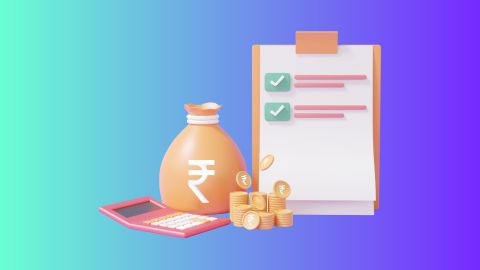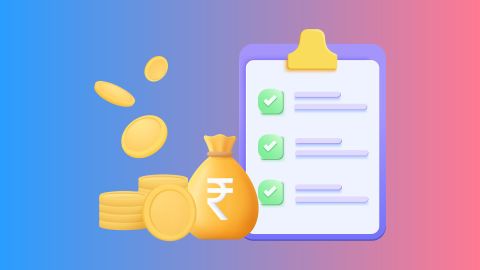3 min
08-August-2024
Loan disbursement is a pivotal stage in the loan lifecycle, marking the transition from approval to the actual release of funds. Understanding this process is crucial for both borrowers and lenders, as it ensures that the funds are distributed correctly and used for their intended purpose. This guide will provide an in-depth look at loan disbursement, including its definition, steps involved, and various types. Whether you are considering applying for personal loan or seeking to understand how the disbursement process works, this comprehensive overview will offer valuable insights.
Step 1: Identification of the need for disbursement
The need for disbursement is identified once the loan has been approved and all pre-disbursement conditions have been met. This step involves reviewing the loan agreement to confirm the disbursement schedule and amount. The lender ensures that all required documents are in place and that any preconditions, such as insurance or collateral requirements, are satisfied before proceeding with the disbursement.
Step 2: Request and documentation
Borrowers are required to submit specific documentation to facilitate disbursement. This may include proof of identity, proof of income, and any other documents stipulated in the loan agreement. The lender reviews these documents to verify their accuracy and completeness. This step ensures that all necessary information is available to process the loan funds correctly.
Step 3: Approval and authorization
Once the documentation is reviewed, the loan disbursement request is forwarded for final approval and authorization. This step involves a thorough review by the lender’s underwriting or disbursement team to ensure that all conditions are met. Authorization is granted based on the verification of documents and compliance with the loan terms.
Step 4: Processing the payment
After approval, the lender processes the payment by transferring the loan funds to the borrower’s account or directly to a third party, as specified in the loan agreement. This step involves coordinating with financial institutions to ensure that the funds are transferred accurately and timely.
Step 5: Record-keeping and reconciliation
The lender maintains detailed records of the disbursement, including transaction details and documentation. Reconciliation is performed to ensure that the disbursement aligns with the loan agreement and that all financial records are accurate. This step is essential for tracking the loan’s progress and maintaining transparency.
Step 6: Notification and confirmation
Both the borrower and any relevant third parties are notified of the disbursement. The lender provides confirmation that the funds have been released, including transaction details and any relevant instructions. This step ensures that all parties are informed and that there is a clear record of the disbursement.
Step 7: Post-disbursement monitoring
Following disbursement, the lender monitors the use of the funds to ensure they are used according to the loan agreement. This may involve periodic checks or requests for updates from the borrower. Post-disbursement monitoring helps prevent misuse of funds and ensures compliance with the loan terms.
Step 8: Compliance and reporting
The lender ensures that the disbursement complies with all regulatory and internal guidelines. This step includes preparing reports for internal review and external regulatory agencies, as required. Compliance and reporting are crucial for maintaining regulatory standards and ensuring the integrity of the loan process.
Payments for day-to-day business expenses, such as rent or utilities.
Payroll disbursements
Payments made to employees as part of their regular wages or salaries.
Loan disbursements
Funds released to borrowers after a loan is approved, for personal, educational, or business use.
Dividend disbursements
Payments made to shareholders from a company’s profits.
Vendor or supplier payments
Payments to vendors or suppliers for goods and services provided to a business.
Tax disbursements
Payments made to government agencies for taxes owed.
Insurance disbursements
Payouts made by insurance companies to policyholders or beneficiaries.
Governmental disbursements
Funds allocated by government agencies for various public services or benefits.
Reimbursements
Payments made to individuals or organisations to cover expenses previously incurred.
Know more about personal loan application process of Bajaj Finserv.
What is loan disbursement?
Loan disbursement is the process by which a lender releases the approved loan funds to the borrower. Once the loan application has been approved and all conditions met, the lender transfers the money to the borrower’s designated account or directly to a third party, such as a service provider. This step completes the loan approval process and allows the borrower to access and use the funds as intended. Loan disbursement can occur in a lump sum or in stages, depending on the terms of the loan agreement.What is a disbursement fee?
A disbursement fee is a charge that may be applied by lenders to cover the costs associated with processing and distributing loan funds. This fee compensates the lender for administrative tasks such as verifying documentation, managing transactions, and maintaining records. Disbursement fees can vary based on the type of loan and lender policies. Understanding these fees upfront is important for borrowers, as they can affect the overall cost of the loan.How does disbursement work?
Disbursement involves several key steps to ensure that the funds are transferred accurately and in accordance with the loan agreement. This process includes identifying the need for disbursement, collecting and verifying documentation, and processing the payment. Each step is designed to ensure that the loan funds are used appropriately and that all parties adhere to the agreed terms.Step 1: Identification of the need for disbursement
The need for disbursement is identified once the loan has been approved and all pre-disbursement conditions have been met. This step involves reviewing the loan agreement to confirm the disbursement schedule and amount. The lender ensures that all required documents are in place and that any preconditions, such as insurance or collateral requirements, are satisfied before proceeding with the disbursement.
Step 2: Request and documentation
Borrowers are required to submit specific documentation to facilitate disbursement. This may include proof of identity, proof of income, and any other documents stipulated in the loan agreement. The lender reviews these documents to verify their accuracy and completeness. This step ensures that all necessary information is available to process the loan funds correctly.
Step 3: Approval and authorization
Once the documentation is reviewed, the loan disbursement request is forwarded for final approval and authorization. This step involves a thorough review by the lender’s underwriting or disbursement team to ensure that all conditions are met. Authorization is granted based on the verification of documents and compliance with the loan terms.
Step 4: Processing the payment
After approval, the lender processes the payment by transferring the loan funds to the borrower’s account or directly to a third party, as specified in the loan agreement. This step involves coordinating with financial institutions to ensure that the funds are transferred accurately and timely.
Step 5: Record-keeping and reconciliation
The lender maintains detailed records of the disbursement, including transaction details and documentation. Reconciliation is performed to ensure that the disbursement aligns with the loan agreement and that all financial records are accurate. This step is essential for tracking the loan’s progress and maintaining transparency.
Step 6: Notification and confirmation
Both the borrower and any relevant third parties are notified of the disbursement. The lender provides confirmation that the funds have been released, including transaction details and any relevant instructions. This step ensures that all parties are informed and that there is a clear record of the disbursement.
Step 7: Post-disbursement monitoring
Following disbursement, the lender monitors the use of the funds to ensure they are used according to the loan agreement. This may involve periodic checks or requests for updates from the borrower. Post-disbursement monitoring helps prevent misuse of funds and ensures compliance with the loan terms.
Step 8: Compliance and reporting
The lender ensures that the disbursement complies with all regulatory and internal guidelines. This step includes preparing reports for internal review and external regulatory agencies, as required. Compliance and reporting are crucial for maintaining regulatory standards and ensuring the integrity of the loan process.
Types of disbursement
Operational disbursementsPayments for day-to-day business expenses, such as rent or utilities.
Payroll disbursements
Payments made to employees as part of their regular wages or salaries.
Loan disbursements
Funds released to borrowers after a loan is approved, for personal, educational, or business use.
Dividend disbursements
Payments made to shareholders from a company’s profits.
Vendor or supplier payments
Payments to vendors or suppliers for goods and services provided to a business.
Tax disbursements
Payments made to government agencies for taxes owed.
Insurance disbursements
Payouts made by insurance companies to policyholders or beneficiaries.
Governmental disbursements
Funds allocated by government agencies for various public services or benefits.
Reimbursements
Payments made to individuals or organisations to cover expenses previously incurred.
Conclusion
Loan disbursement is a crucial part of the loan process, involving multiple steps to ensure that funds are distributed correctly and used appropriately. Understanding the disbursement process helps borrowers and lenders manage expectations and responsibilities effectively. For those considering a personal loan, exploring options and applying online can be a convenient way to get started. Learn more and apply online for a personal loan to experience a streamlined application and disbursement process tailored to your needs.Know more about personal loan application process of Bajaj Finserv.




